Here's a puzzling design fault we see over and over. Well, once or twice a year anyway. Seems every linear builder using big tubes understands the need for a center-tapped filament supply for tubes that have a simple cathode, directly heated. To keep the AC voltage that lights it up from modulating the amplifier circuit, a tap wire is installed at the center of the transformer winding. The net AC voltage here is zero and it becomes the DC-circuit connection point leading to the negative side of the high-voltage power supply.
Just one problem. The GI46b russky military triode is not built that way. I won't say who built this amplifier. I'm allergic to pi$$ing contests. After all, every amplifier that's built with a design flaw is job security for me. Bad-mouthing someone who builds them is not my job. Too much like biting the hand that feeds me
.
This tube has an indirectly-heated cathode not unlike a 6KD6 or 6LQ6. Those tubes are not ceramic transmitting types. This tube has one side of the heater connected to the indirectly-heated cathode. This makes life easier on the insulation that separates the heater wires from each other and from the cathode.
This amplifier had a persistent "AC hum" on the carrier it amplified. Turns out that using the filament transformer's center tap wire for the tube's DC circuit return modulates about 6 Volts AC onto the tube's grid circuit. Caused a 60 Hz modulation "hum" added to the radio's carrier.
Here's the relay that activates the tube when you key, along with transferring the coax sockets to the input and output circuits. The single black wire leads back to the tube's cathode circuit.
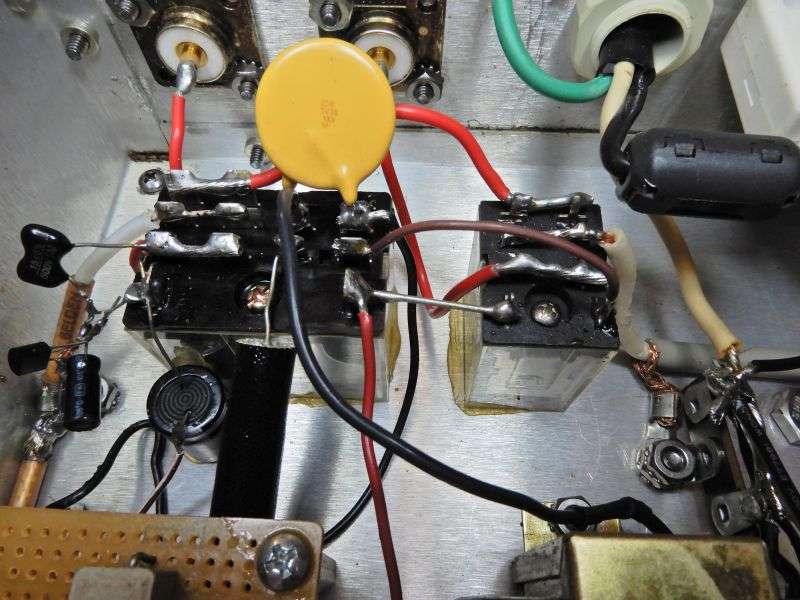
The black wire disappears under the filament transformer, but trust me. It's the center tap wire.
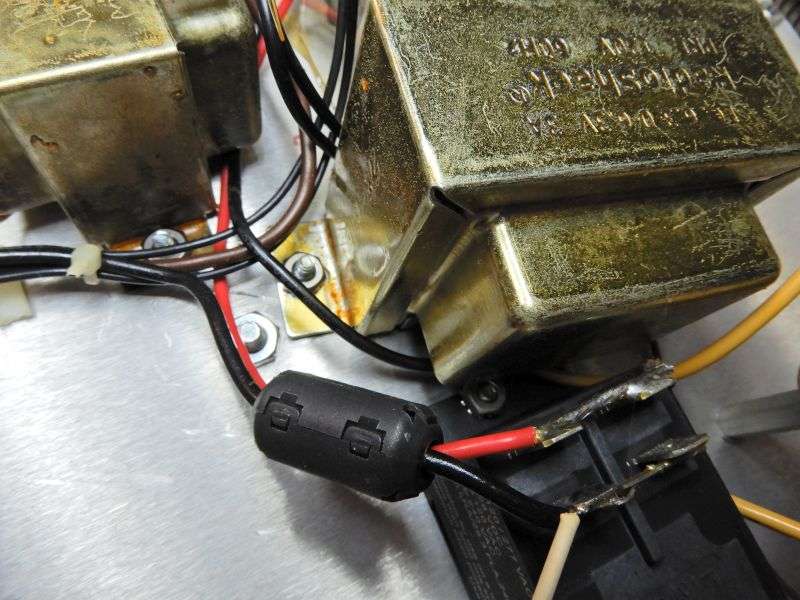
The cure is to move this black wire from the transformer to one side of the cathode choke. The side
connected to the tube's cathode and heater both.
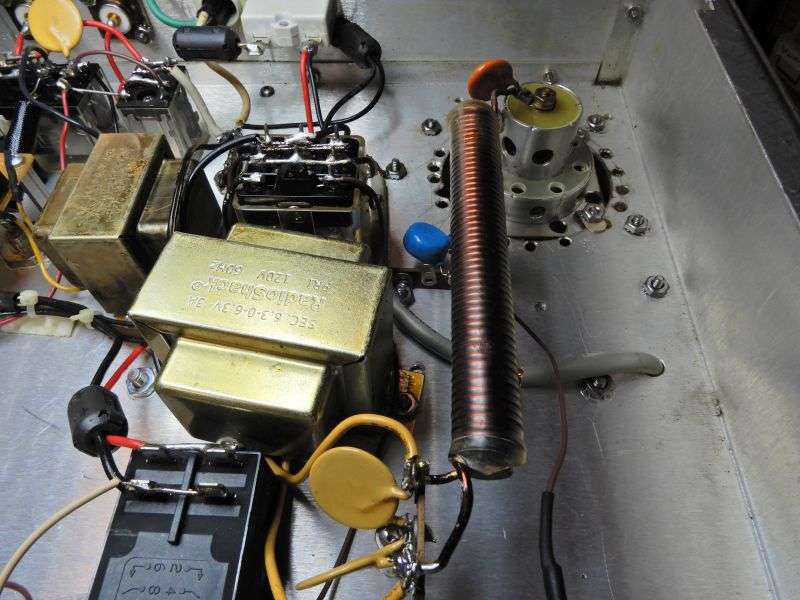
Have to take one side of the choke loose to identify which of the two tie-strip lugs is the right one.
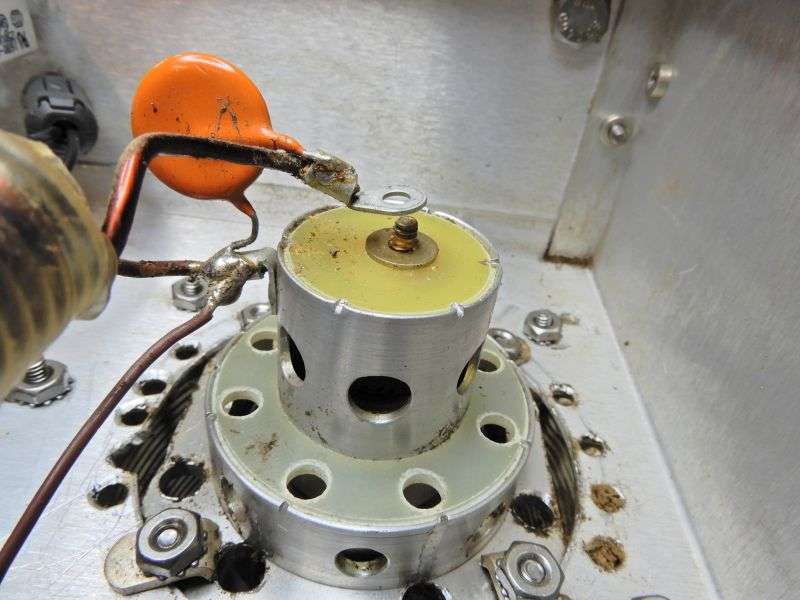
The black wire now goes to the correct side of the cathode choke. The fat yellow bypass cap got replaced by the smaller blue one when one lead wire broke off it. Stuff happens.
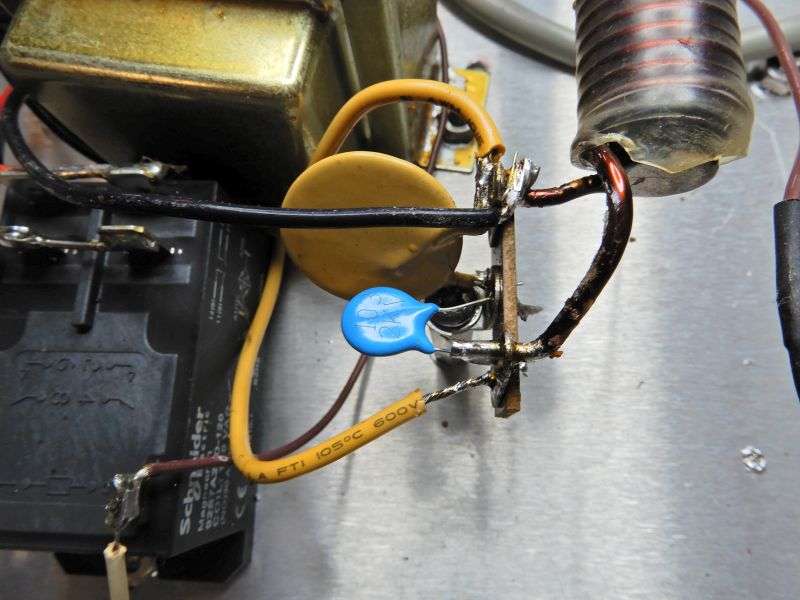
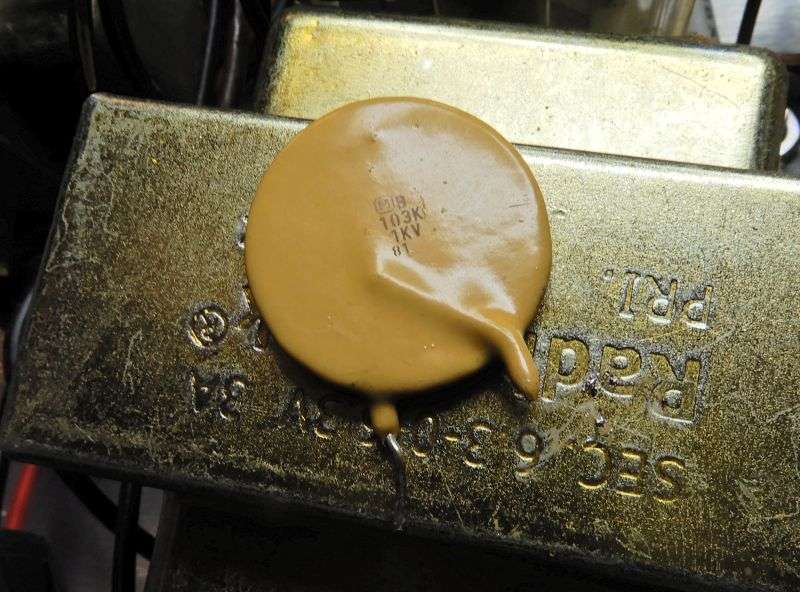
All in all this is not a badly-built amplifier. Anyone who has ever built a linear will probably have an opinion about how someone else does it.
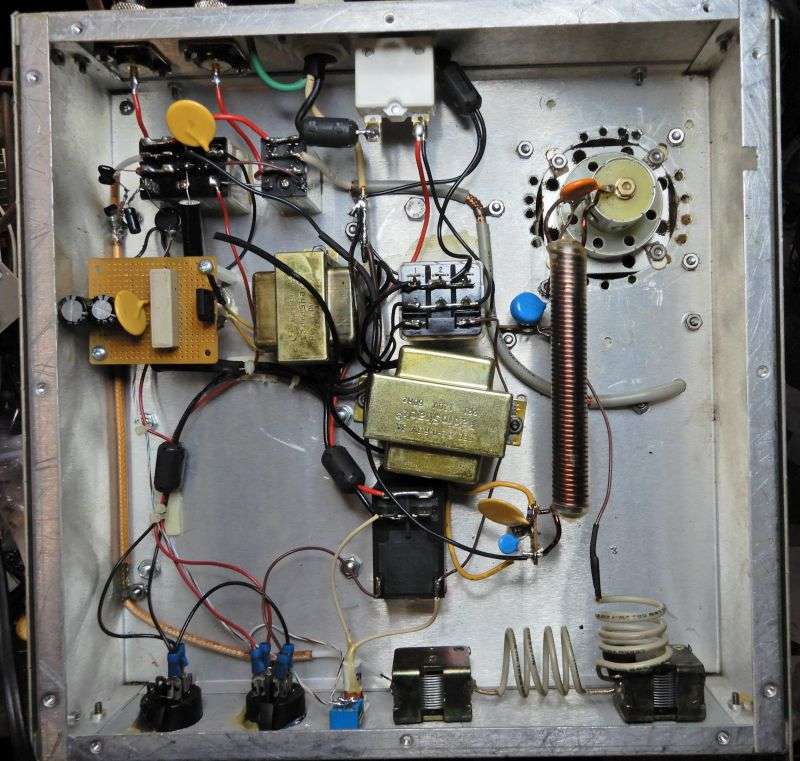
But if you run into a persistent "AC hum modulation" coming from an amplifier with a russky ceramic triode, have a look to see if the builder fell into the center-tap trap.
73
Just one problem. The GI46b russky military triode is not built that way. I won't say who built this amplifier. I'm allergic to pi$$ing contests. After all, every amplifier that's built with a design flaw is job security for me. Bad-mouthing someone who builds them is not my job. Too much like biting the hand that feeds me
.
This tube has an indirectly-heated cathode not unlike a 6KD6 or 6LQ6. Those tubes are not ceramic transmitting types. This tube has one side of the heater connected to the indirectly-heated cathode. This makes life easier on the insulation that separates the heater wires from each other and from the cathode.
This amplifier had a persistent "AC hum" on the carrier it amplified. Turns out that using the filament transformer's center tap wire for the tube's DC circuit return modulates about 6 Volts AC onto the tube's grid circuit. Caused a 60 Hz modulation "hum" added to the radio's carrier.
Here's the relay that activates the tube when you key, along with transferring the coax sockets to the input and output circuits. The single black wire leads back to the tube's cathode circuit.

The black wire disappears under the filament transformer, but trust me. It's the center tap wire.

The cure is to move this black wire from the transformer to one side of the cathode choke. The side
connected to the tube's cathode and heater both.

Have to take one side of the choke loose to identify which of the two tie-strip lugs is the right one.

The black wire now goes to the correct side of the cathode choke. The fat yellow bypass cap got replaced by the smaller blue one when one lead wire broke off it. Stuff happens.


All in all this is not a badly-built amplifier. Anyone who has ever built a linear will probably have an opinion about how someone else does it.

But if you run into a persistent "AC hum modulation" coming from an amplifier with a russky ceramic triode, have a look to see if the builder fell into the center-tap trap.
73

